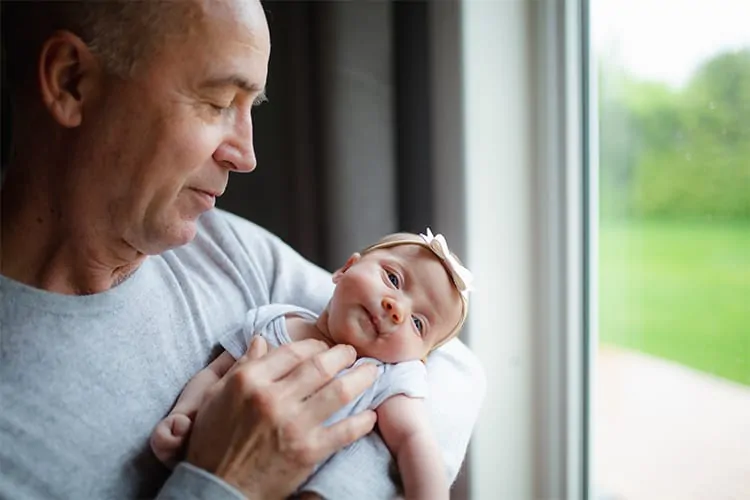There tends to be a lack of knowledge among young people regarding fertility which can cause misinformed decision making on starting a family. In this article you will find information on beneficial knowledge about youth and fertility.
Comprehensive sexual health education mainly focuses on the prevention of unwanted pregnancies and sexually transmitted infections. Even beyond what young people may learn during school, many societal messages indirectly encourage delaying parenthood. Research also shows that health care professionals who provide care to young people during adolescence and young adulthood focus their patient teaching on birth control. There is also a bias towards women in this teaching, with the role of men being largely overlooked or associated with risky behaviours such as the spread of sexually transmitted infections. Very little focus is given to understanding the fertility attitudes and experiences of men, how best to optimise chances of pregnancy, the factors that may affect fertility and the factors and/or life choices that could potentially jeopardise parenthood goals.
As a result, young people tend to have poor knowledge on a range of fertility related topics (for example risk factors for reduced future fertility, what their fertile window is etc.) and can inadvertently expose themselves to lifestyle factors that reduce their current and future fertility, such as smoking, alcohol consumption and obesity. Furthermore, without appropriate education and awareness they may be more inclined to normalise the onset of physical symptoms that could be an indication of an underlying risk factor such as pain, lump or swellings in the testicles, problems with erections or ejaculation and delay seeking timely medical advice.
This general lack of knowledge may cause misinformed decision-making about when to start a family or to putting off trying to get pregnant until they are older when getting pregnant can be harder and may leave them with a higher risk of experiencing problems in the pregnancy like miscarriage and still birth.
So, what should younger people know about their fertility?

The fertile window
Men do not have a fertile window because sperm is continually formed and stored in the testicles, ready to be used at any time. However, there is only a specific time in each menstrual cycle when it is possible to get a woman pregnant. This is often referred to as the woman’s ‘fertile window’. The fertile window is once a month, close to the time of ovulation (when the woman releases an egg). Ovulation typically happens two weeks before the next period is due. The fertile window is approximately six days long, four days before ovulation and two days after. The length of the fertile window is determined by the length of time the man’s sperm can live in the woman’s body.
How long does it take to get pregnant?
It is difficult to estimate exactly how long it would take for a couple to get pregnant. Sometimes pregnancy happens quickly but it can often take months of
trying. If a couple are having regular unprotected sex (every two to three days) or timing sex around ovulation, more than eight out of 10 couples under the age of 40 years will get pregnant within one year. If a couple has been trying for more than 12 months (six months if the woman is over the age of 35) without success it is important to seek advice from a doctor.
Fertility is age dependant
For both men and women fertility declines with age but compared to what we know about female fertility, the decline in male fertility is less widely understood. Women are born with a fixed number of eggs in their ovaries. The number of eggs decrease as a woman gets older. At birth, most girls have approximately 2 million eggs. By adolescence this has decreased to about 400,000 and by the age of 37 there are approximately 25,000 remaining. At every menstrual cycle, one of the immature eggs will mature and be released during ovulation. Because during any one cycle, as many as 30 or 40 eggs begin the process of maturation (with only one reaching full maturity), the remaining eggs that never reach maturity and are not released during ovulation die and get re-absorbed into the body.
Furthermore, it is not only egg quantity that decreases with age but also quality. In addition, both quantity and quality determines the woman’s fertility. The reduction in egg quantity and quality that happens as women get older means that there is a marked decrease in female fertility from approximately age 35 years.

By the age of 37 years, 90% of a female’s eggs are gone. Even if a woman is not ovulating (if she is taking the contraceptive pill or is pregnant), the number and quality of eggs continues to decline at the same rate. How quickly a woman’s fertility declines will depend on a combination of genetic and lifestyle (for example smoking) factors.
In terms of male fertility, men are not born with their sperm. From puberty men produce sperm daily. Although they produce sperm all their life, similarly to woman, quantity and quality decreases with age and can be affected by lifestyle choices. The onset of this decrease is however slightly later for men, at around the age of 40 years, though most men will continue to produce sperm into older adulthood.

When should people start trying to get pregnant?
Increased age doesn’t just pose a risk to a person’s ability to conceive but it can also pose a risk to the health of the mother and the baby. The mean age of first birth for women in high income countries continues to increase. Research shows men and women are delaying parenthood in order to put in place the necessary conditions in which to have and bring up a child (career, marriage, mortgage etc). Men in particular have been shown to place more importance on the pursuit and achievement of alternative lifestyle choices (for example travel) before beginning parenthood. While men are not so constrained by their biological ability to father a child, for men, delaying parenthood can indirectly result in the woman being older, consequently decreasing both their chances of achieving a pregnancy. For example, while women younger than 30 have about a 20% chance of getting pregnant each month this drops to around 5% by the age of 40. Age can also pose a risk to a person’s ability to achieve their desired ideal family size.
For example, the more children a person desires the younger they should be when they start trying to get pregnant. Planning and trying for parenthood at a younger age gives people the best chances of achieving their desired family size before age-related fertility decline becomes a dominant consideration.
Consequently, delaying parenthood can lead to reduced fertility, an increased risk of involuntary childlessness and/or being unable to have the desired number of planned children. Postponement of parenthood is also associated with an increased risk of pregnancy loss and certain developmental conditions. For example, when the male is over 40 there is an increased risk of miscarriage, still birth, and autism.
Infertility and Reproductive technology and success rates
Worldwide, approximately 1 in 7 couples will have fertility problems. Preventable causes such as age-related infertility and exposure to sexually transmitted infections are important causes. Although fertility treatment can help infertile heterosexual couples, same sex couples and single people have children, it should not be relied on as a fool proof method for achieving parenthood, Success rates with fertility treatment vary according to treatment type and age. Please see the other articles on this website that discuss in detail the various causes of both male and female infertility and fertility treatment options.
Most men and women want to have children in the future. However, many delay parenthood, unknowingly by putting themselves at risk of age-related reduced fertility. What’s more, many people expose themselves to fertility risks and fail to seek timely medical advice or treatment because of misconceptions or lack of knowledge. Current fertility education initiatives aim to diminish fertility myths, misconceptions and increase fertility awareness and knowledge. Such initiatives highlight the importance of providing accurate information about fertility and the factors that can affect it to young people, parents, educators and health care professionals. The overall goal is to change sexual health education to include fertility awareness as well as the prevention of unwanted pregnancies and the spread of sexually transmitted infections. Ensuring men and women are fully informed about their fertility will enable them to accurately plan for parenthood and help them achieve their parenthood goals.


